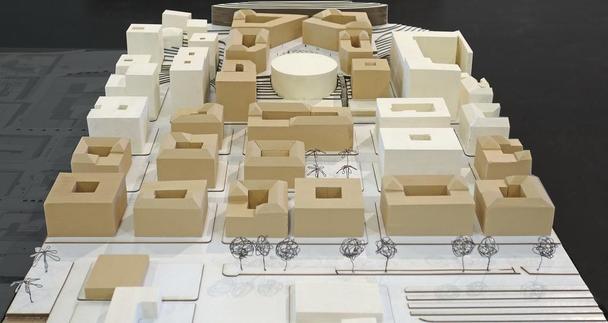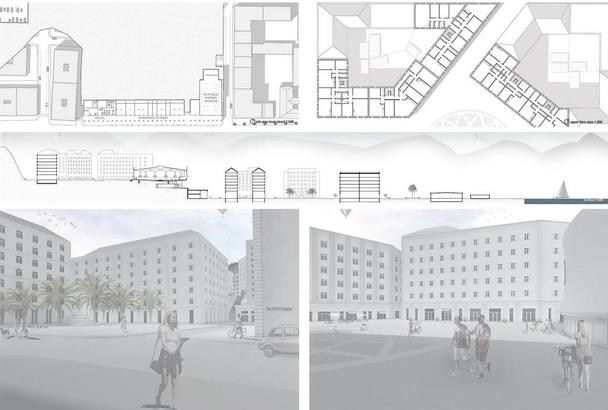MASTERSTUDIENGANG - ENVIRONMENTAL DESIGN
Entwurf: Dockland – La Spezia
On the tracks of history – Colle dei cappuccino / Auf den Spuren der GeschichteEntwurf: Dockland – La Spezia
Larissa Behrens, Rico Krispin, Wintersemester 2017/2018
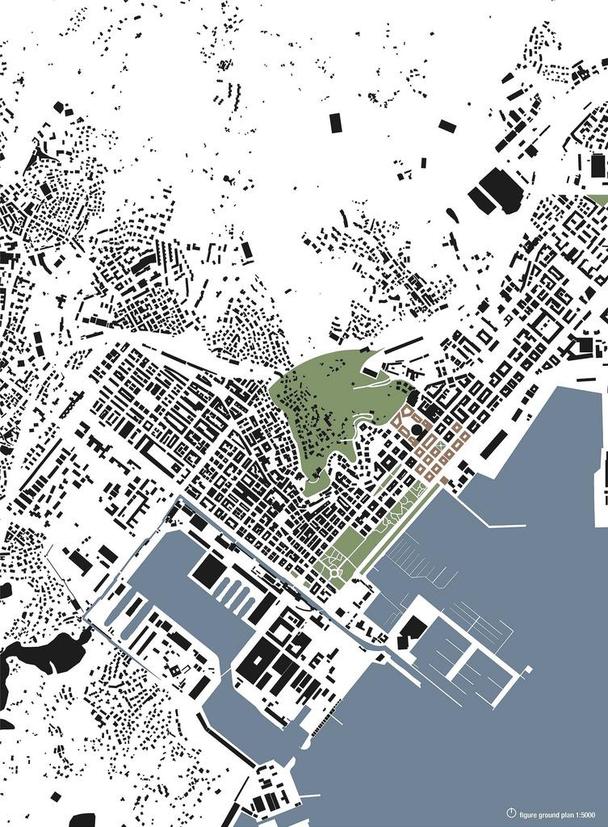
Geographical Situation
La Spezia is a city in the northern Italian region Liguria and capital of the same name province. The City is located on a narrow ground strip, bounded by mountains to the north and west and the bay to the south. One con-sequence of the restriction is, that various urban districts developed on surrounding hills and on these grounds the urban structure relatively irregular. In order to allow the city center to expand in an easterly direction, the hill „Colle dei Cappuccini” was even demolished in the 1930s. Today the „Piazza Europa” is located hereabout. The development to the west prevents the naval arsenale.
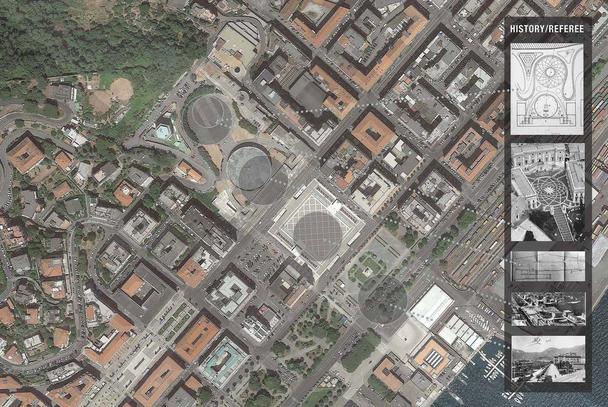
Conception
On the spot, it is inevitable that the huge „Piazza Europa” in front of the great sublime church seems disproportionately large and unused. What was the intention of this planning? What happens behind the monumental church? How do you reach this place? Why is this not used and made representative? All these questions were investigated and worked up with the help of La Spezia‘s history. The result is a restructured scaled-down Piazza Europa surrounded by the typology of courtyards which are typical for La Spezia. The main focus of the work is on the formerly disorganized and difficult to access area be-hind the church. The architect Adalberto Libera planned the church to the mountain oriented and designed a tree-lined church forecourt with a complex design in the sty-le of Michel Angelo. But after his death moved the area into the background and was not further planned. The currently unused plot is highlighted by a new spacious staircase and animated by buildings on the square. The center of the square is a miniature version of the circle planned by Libera with a seat function to stay.
Masterplan 1:1000
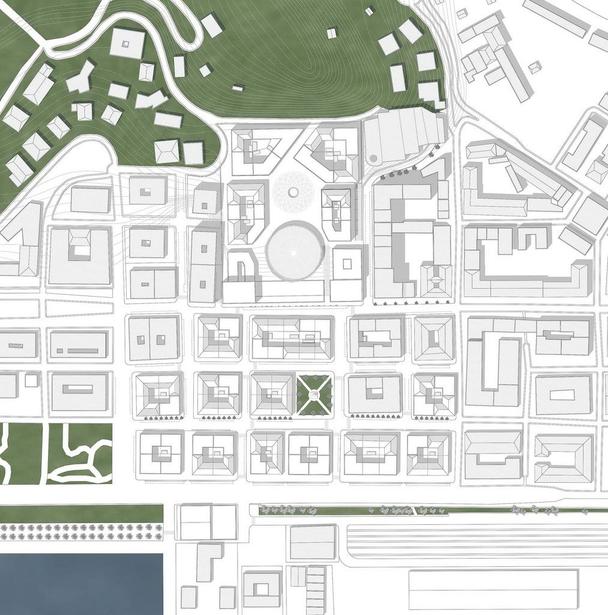
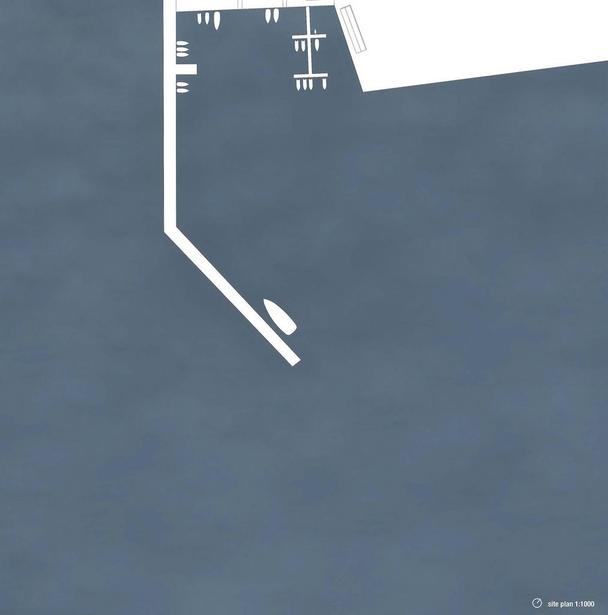
Urban Detail 1:500
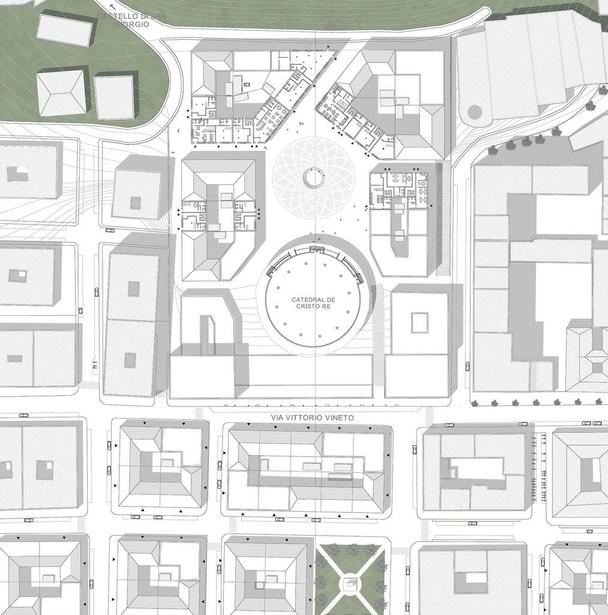
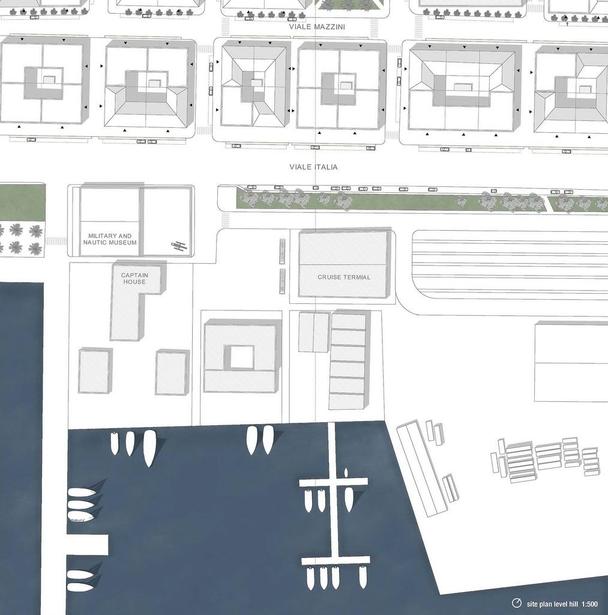
Geografische Situation
La Spezia liegt auf einem engen Landstreifen, den im Nor-den und Westen Berge und im Süden das Meer begrenzen. Eine Folge davon ist, dass eine größere Anzahl von Stadtvierteln auf den umliegenden Hügeln entstanden ist und die urbane Struktur daher relativ unregelmäßig ist. Um dem Stadtkern die Expansion in östlicher Richtung zu ermöglichen, wurde in den 1930er Jahren sogar der Hü-gel „Colle dei Cappuccini“ abgetragen. An dessen Stelle befindet sich heute die Piazza Europa. Die Entwicklung in Richtung Westen verhindert das Marinearsenal.
Konzept
Vor Ort fällt unweigerlich auf, dass der riesige „Piazza Europa“ vor der großen erhabenen Kirche unproportional groß und ungenutzt erscheint. Welche Intention ging dieser Planung voraus? Was passiert hinter der monumentalen Kirche? Wie erreicht man diesen Ort? Warum wird dieser nicht genutzt und repräsentativ gestaltet? All diesen Fragen wurde auf den Grund gegangen und unter anderem mit Hilfe der Geschichte La Spezias aufgearbeitet. So entsteht ein neustrukturierter verkleinerter Piazza Europa umgeben von der typisch für La Spezia vorzufindenden Hofhaustypologie. Hauptaugenmerk der Arbeit liegt jedoch auf dem ehemals unorganisierten und schwer zugänglichen Areal hinter der Kirche. Der Architekt Adalberto Libera plante die Kirche zum Berg orientiert und entwarf einen von Bäumen umrahmten Kirchenvorplatz mit aufwendiger Gestaltung im Stile Michel Angelos, doch nach seinem Tode rückte dieser in den Hintergrund und wurde nicht weiter beplant. Das momentan ungenutzte Areal wird durch eine neue großzügige Treppe hervorgehoben und durch gezielte Gebäude auf dem Platz belebt. Das Zentrum des Platzes bildet eine verkleinerte Version des von Libera geplanten Kreises mit Sitzfunktion zum Verweilen.
Below the cathedral Cristo Re, stairway to the new quarter
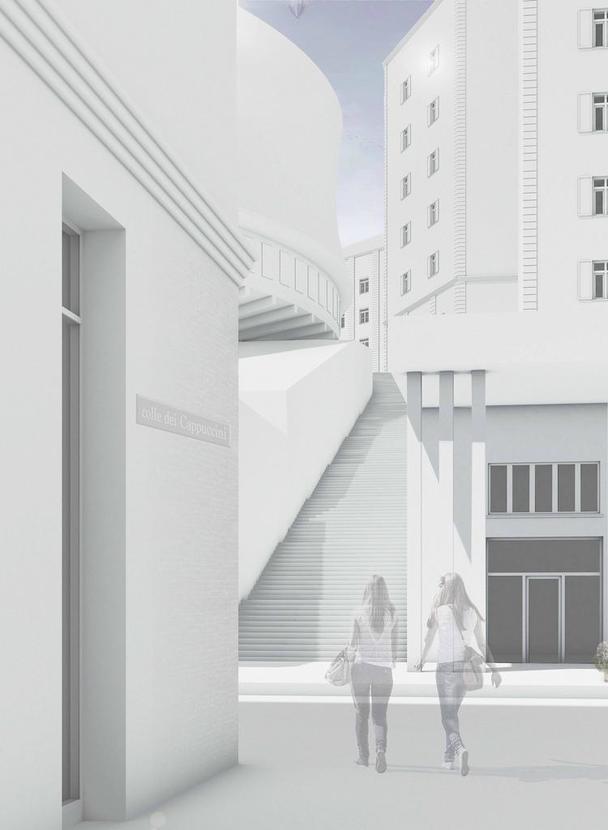
Model 1:1000
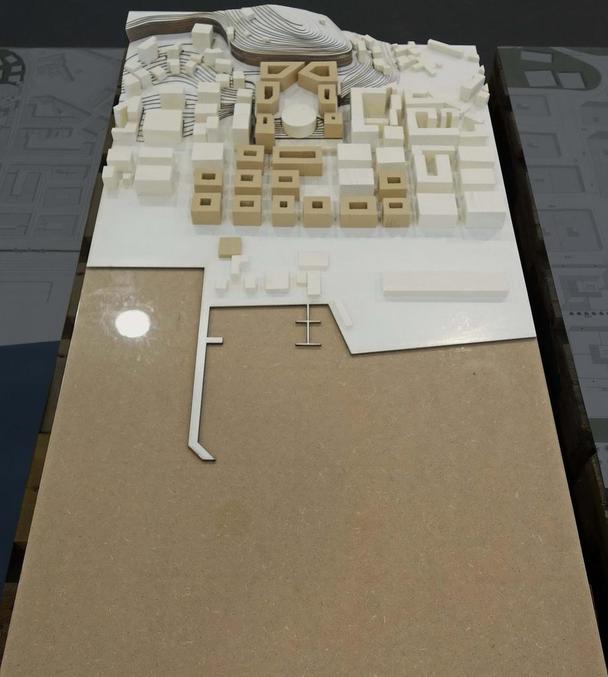
Model 1:500
